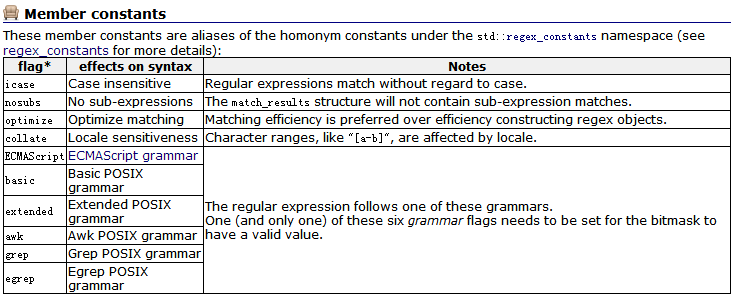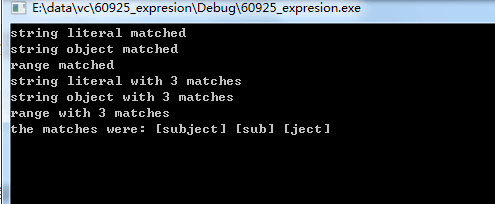c++實現正則表示式匹配
阿新 • • 發佈:2019-02-17
c++11之後封裝了自己的正則表示式,直接包含檔案即可使用,利用regex類宣告物件初始化正則表示式,regex expressionName (“正則表示式”);正則表示式具體語法參考這裡;regex_match()方法進行匹配,匹配成功返回1,失敗返回0;cmatch和smatch類分別存放char*和string型別的結果,遍歷即可獲得;
// regex_match example
#include <iostream>
#include <string>
#include <regex>
int main ()
{
if (std::regex_match ("subject" 小問題總結:

1.上圖正則表示式的一些限制,如icase: Case insensitive(忽略大小寫)regex expressionName (“正則表示式”,std::regex::icase).
2.正則表示式在c++程式碼中注意轉義字元的使用,由於c++程式碼本身的轉移功能,需要兩次“\”的操作才能實現,如正則表示式需要匹配“\”,正則表示式為“\”,則咋c++程式碼中需要“\\”,第一個“\”轉義說明第二個“\”為“\”,同理第三個“\”轉義說明第四個“\”為“\”,獲得正則表示式“\”.

